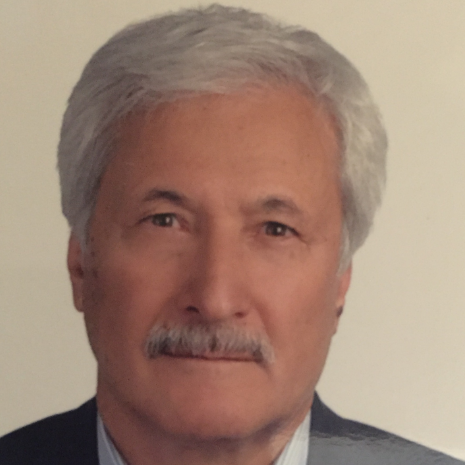International Journal of Intelligent Systems and Applications (IJISA)
IJISA Vol. 12, No. 3, 8 Jun. 2020
Cover page and Table of Contents: PDF (size: 694KB)
A Novel Method to Solve a Class of Non-local Diffusion Optimal Control Problems by using Bernstein Polynomials
Full Text (PDF, 694KB), PP.35-45
Views: 0 Downloads: 0
Author(s)
Index Terms
Optimal control, diffusion equation, Bezier function, Bernstein polynomial
Abstract
The aim of this paper is solving optimal control problems governed by non-local diffusion equations via a mesh-less method. The diffusion equation and in particular, the heat conduction equation is essential in sciences. This equation appears in many fields, such as engineering, electrostatic, and mathematics. For solving the mentioned optimal control problems, the method is established upon expanding of variables by the basis of Bezier functions. We apply, for the first time, the Bernstein approximation in solving an optimal control problem governed by the diffusion equation. A direct algorithm is given for solving this problem. Bernstein polynomials expand the trajectories and control functions with unknown control points. Then the optimal control problem is converted to a mathematical programming problem. By solving the mathematical programming problem, the approximated solution of trajectories and control are driven. The convergence of the method in approximating of the optimal control problem is proved. Some numerical examples for demonstrating the effectiveness of the method are included.
Cite This Paper
Ali Ketabdari, Mohammad Hadi Farahi, "A Novel Method to Solve a Class of Non-local Diffusion Optimal Control Problems by using Bernstein Polynomials", International Journal of Intelligent Systems and Applications(IJISA), Vol.12, No.3, pp.35-45, 2020. DOI:10.5815/ijisa.2020.03.05
Reference
[1]P. M. Morse and H. Feshbach, “Methods of Theoretical Physics,” New York, McGraw-Hill, 1953.
[2]J. C. Maxwell, “On the Dynamic Theory of Gases,” Phil. Trans. R. Soc., vol. 157, pp. 49-88, 1967.
[3]H. S. Carslaw and J. C. Jaeger, “Conduction of Heat in Solids,” Oxford University Press, pp. 96-97, 1959.
[4]Z. Rotem and J. E. Neilson, “Exact Solution for Diffusion to Flow Down an Incline,” Can. J. Chem. Engng. Sci., vol. 47, pp. 341-346, 1969.
[5]A. Tamir and Y. Taitel, “Diffusion to flow down an incline with surface resistance,” Chemical Engineering Science, vol. 26, pp. 799-808, 1971.
[6]Y. Taitel, “On the parabolic, hyperbolic and discrete formulation of the heat conduction equation,” Int. J. Heat Mass Transfer, vol. 15, pp. 369-371, 1972.
[7]V. P. Pavlov and V. M. Kudoyarova, “Spline based nu-merical method for Heat conduction nonlinear problems solution,” Procedia Engineering, vol. 206, pp. 704-709, 2017.
[8]K. Al-Khaled, “Finite Fourier transform for solving po-tential and steady-state temperature problems,” Advances in Difference Equations, vol. 1, pp. 1-14, 2018.
[9]R. W. Lewis, P. Nithiarasu and K. N. Seetharamu, “Fun-damentals of the Finite Element Method for Heat and Fluid Flow,” John Wiley and Sons. Ltd., 2005.
[10]E. Li, Z. Zhang, Z. C. He, X. Xu, G. R. Liu and et al. “Smoothed finite element method with exact solutions in heat transfer problems,” International Journal of Heat and Mass Transfer, vol. 78, pp. 1219-1231, 2014.
[11]L. Su and T. Jiang, “Numerical Method for Solving Nonhomogeneous Backward Heat Conduction Problem,” International Journal of Differential Equations, vol. 2, pp. 1-11, 2018.
[12]C. R. Jun and G. H. Xia, “Meshless analysis of three-dimensional steady-state heat conduction problems,” Chin. Phys. B, vol. 19, pp. 1-7, 2010.
[13]I. V. Singh, M. Tanaka and M. Endo, “Meshless method for nonlinear heat conduction analysis of nano-composites,” Heat Mass Transfer, vol. 43, pp. 1097-1106, 2007.
[14]A. Chakrabarti and S. C. Martha, “Approximate solutions of Fredholm integral equations of the second kind,” Appl. Math. Comput., vol. 211, pp. 459-466, 2009.
[15]F. Ghomanjani, M. H. Farahi and A. Kilicman, “Bezier curves for solving Fredholm integral equations of the second kind,” Mathematical Problems in Engineering, pp. 1-6, 2014.
[16]B. N. Mandal and S. Bhattacharya, “Numerical solution of some classes of integral equations using Bernstein polynomials,” Appl. Math. Comput., vol. 190, pp. 1707-1716, 2007.
[17]S. Bhattacharya and B. N. Mandal, “Use of Bernstein polynomials in numerical solutions of Volterra integral equations,” Appl. Math. Sci., vol. 2, pp. 1773-1787, 2008.
[18]K. Maleknejad, E. Hashemizadeh and B. Basirat, “Com-putational method based on Bernstein operational matrices for nonlinear Volterra-Fredholm-Hammerstein integral equations,” Commun. Nonl. Sci. Number. Simul., vol. 17, pp. 52-61, 2012.
[19]J. Zheng, T. W. Sederberg and R. W. Johnson, “Least squares methods for solving differential equations using Bezier control points,” Applied Numerical Mathematics, vol. 48, pp. 237-252, 2004.
[20]E. Safaie and M. H. Farahi, “An approximate method for solving fractional TBVP with state delay by Bernstein polynomials,” Comp. Appl. Math., vol. 298, pp. 2-16, 2016.
[21]R. Winkel, “Generalized Bernstein polynomials and Bezier curves: an application of umbral calculus to computer aided geometric design,” Advances in Applied Mathematics, vol. 27, pp. 51-81, 2001.
[22]F. Ghomanjani and M. H. Farahi, “Optimal Control of Switched Systems based on Bezier Control Points,” I.J. Intelligent Systems and Applications, vol. 7, pp. 16-22, 2012.
[23]M. Ainsworth and G. Fu, “Bernstein-Bezier Bases for Tetrahedral Finite Elements,” Comput. Methods Appl. Mech. Engrg., vol. 340, pp. 178-201, 2018.
[24]P. P. C. Alzate, C. A. R. Varela and F. Mesa, “Application of Bezier curves to obtain a band of certainty with noise contaminated data,” Contemporary Engineering Sciences, vol. 11, pp. 4905-4912, 2018.
[25]F. Ghomanjani, M. H. Farahi, A. Kilicman, A. V. Kamyad and N. Pariz, “Bezier curves based numerical solutions of deley systems with inverse time,” Mathematical Problems in Engineering, vol. 1, pp. 1-16, 2014.
[26]R. Janssen, S. R. Moisik and D. Dediu, “Modelling human hard palate shape with Bezier curves,” PLoS ONE, vol. 13, pp. 1-38, 2018.
[27]Y. Jin, S. Zhao and Y. Wang, “An Optimal Feed Interpo-lator Based on G2 Continuous Bezier Curves for High-Speed Machining of Linear Tool Path,” Jin et al. Chin. J. Mech. Eng., vol. 32, pp. 32-43, 2019.
[28]R. Palomar, J. Gomez-Luna, F. Cheikh, J. Olivares-Bueno and O. Elle, “High-Performance Computation of Bezier Surfaces on Parallel and Heterogeneous Platforms,” International Journal of Parallel Programming, vol. 46, pp. 1035-1062, 2018.
[29]R. Szabo and A. Gontean, “Photovoltaic cell and module I-V characteristic approximation using bezier curves,” Appl. Sci., vol 8, pp. 1-23, 2018.
[30]M. Alipour, D. Rostamy and D. Baleanu, “Solving mul-ti-dimensional fractional optimal control problems with inequality constraint by Bernstein polynomials operational matrices,” J. Vib. Control, vol. 19, pp. 2523-2540, 2012.
[31]E. Kreyszig, “Introduction to Functional Analysis with Applications,” New York: Wiley, 1978.
[32]M. Dehghan, S. A. Yousefi and K. Rashedi, “Ritz-Galerkin method for solving an inverse heat con-duction problem with a nonlinear source term via Bernstein multi-scaling functions and cubic B-spline functions,” Inverse Problems in Science and Engineering, vol. 21, pp. 500-523, 2013.
[33]K. Karimi, M. Alipour and M. Khaksarfard, “Numerical solution of nonlocal parabolic partial differential equation via Bernstein polynomial method,” Journal of Mathematics, vol. 48, pp. 47-53, 2016.
[34]S. A. Yousefi and M. Behroozifar, “Operational matrices of Bernstein polynomials and their applications,” I. J. Sys. Sci., vol. 41, pp. 709-716, 2010.
[35]H. Fu, “A characteristic finite element method for optimal control problems governed by convection–diffusion equations,” Journal of Computational and Applied Mathematics, vol. 235, pp. 825-836, 2010.
[36]A. Lapin and E. Laitinen, “Efficient Iterative Method for Solving Optimal Control Problem Governed by Diffusion Equation with Time Fractional Derivative,” Lobachevskii Journal of Mathematics, vol. 40, pp. 479-488, 2019.
[37]T. J. Rivlin, “An Introduction to the Approximation of the Functions,” New York: Dover, 1969.
[38]J. E. Rubio, “Control and optimization the linear treatment of nonlinear problems,” Manchester University Press, 1986.
[39]M. Tatari and M. Dehghan, “On the solution of the non–local parabolic partial differential equations via radial basis functions,” Appl. Math. Model, vol. 33, pp. 1729-1738, 2009.
[40]M. Bastani and N. K. Salkuyeh, “Numerical studies of a nonlocal parabolic partial differential equations by spectral collocation method with preconditioning,” Computational Mathematics and Modeling. vol. 24, pp. 81-89, 2013.

